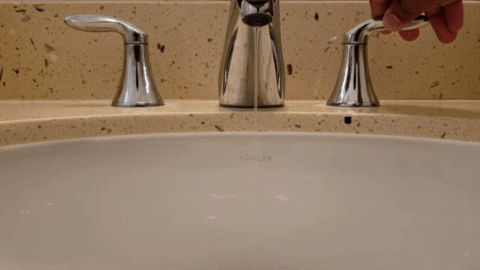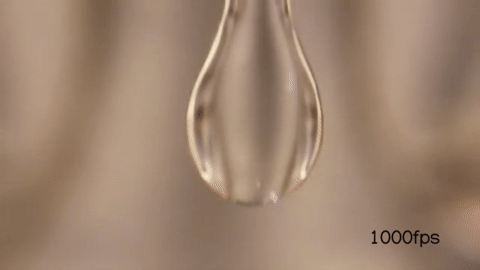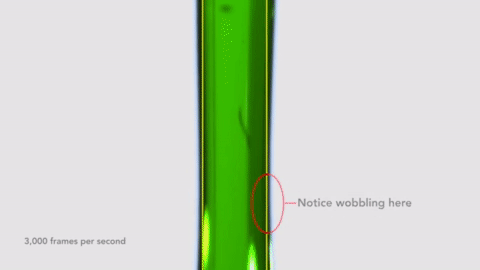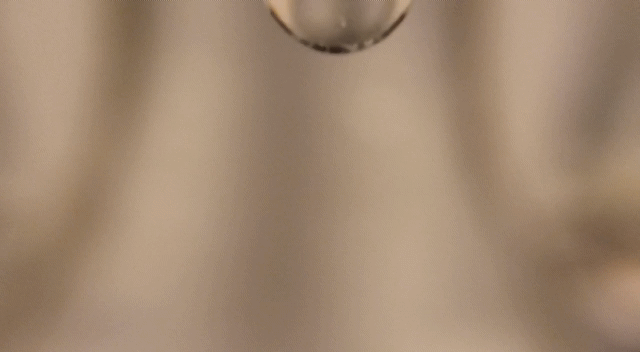#plateau rayleigh instability

When you wake up in the morning and open/close your faucet when you brush your teeth, you might have noticed that it undergoes a transition between a smooth jet to a dripping flow like so :

When the velocity of the fluid exiting the faucet is high, it appears smooth for a longer time before it breaks into droplets:

But when you make the velocity of the fluid exiting the faucet low, it seems to form droplets much earlier than before.
Here’s the water breaking into smaller droplets shot in slow motion:


Notice that just by changing the exit velocity of the water you can control when the droplets form.
You can also control the nature of the droplets that form by changing fluids. Here’s how it looks like if you use water as the fluid (left), pure glycerol(center) and a polymeric fluid(right).

What is causing a jet of fluid to form droplets?
A simple answer to this is perturbations on the surface of the fluid. What does that mean?
Initially the fluid is just falling under the influence of gravity. And velocity of any freely falling object increases as it falls:

But the surface tension of the fluid holds the molecules of the fluid together as they fall down.
Therefore depending on the initial velocity of fluid, the surface tension of the fluid and the acceleration you get a characteristic shape of the jet as it falls down:

This is what you observe as the fluid exits the faucet.
Perturbations
Just after exiting the faucet, there are tiny perturbations on the surface of this fluid as it falls down. This is apparent when you record the flow at 3000fps:

Source: engineerguy
Those tiny perturbations on the surface of the fluid grow as the fluid falls down i.e the jet becomes unstable.
And as a result the fluid jet breaks down to smaller droplets to reach a more thermodynamically favorable state. This is known as the Plateau-Rayleigh instability.

It takes different fluids different time scales to reach this instability. This depends on the velocity of the fluid, the surface tension and the acceleration it experiences.

And some viscous fluids like honey are also able to dampen out these perturbations that occur on their surface enabling them to remain as fluid thread for an extended time.
A note on inkjet printers
By externally perturbing the fluid instead of making the fluid do its own thing, you can make droplets of specific sizes and shapes.
This engineerguy video explains how this is used in inkjet printers in grand detail. Do check it out.
We started today by trying to understand why water exiting a faucet behaves the way it does. Hopefully this blog post has gotten you a step closer to realizing that. Have a great day!
Sources and more:
* This is a topic that is home to a lot of research work and interesting fluid dynamics. If you like to explore more take a look into the mathematical treatment of this instability here.
** This post is part of the ‘Flow series’ by FYPhysics and EcstasyShots!. Check out the previous posts here.

Flow(#2) - Plateau- Rayleigh Instability
In this week on FYPhysics! we will be talking about the classic Plateau-Rayleigh Instability. Stay tuned!
** This post is part of the ‘Flow series’ by FYPhysics and EcstasyShots!. Check out the previous posts here.
